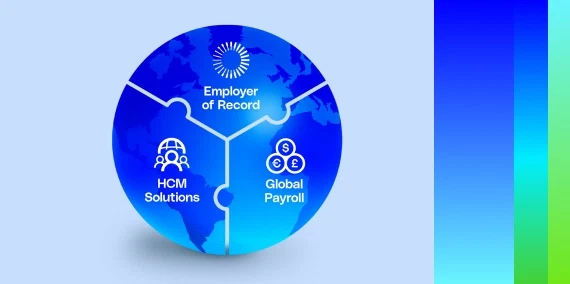Although hiring international contractors might seem like an efficient way to test the waters in a new country, it’s important to understand and follow the rules regarding contractors. You should weigh the pros and cons of hiring 1099 contractors before making a decision. Additionally, companies may consider converting contractors to employees for long-term needs.
When filing tax documents, how do 1099 workers differ from full-time employees?
In the U.S., contractors typically fill out forms 1099-NEC or 1099-MISC, whereas employees fill out the W-2 form for income tax withholding. The main difference between 1099 workers and full-time employees is their legal worker status.
A 1099 worker — also known as a freelancer, independent contractor, or self-employed worker — is a professional who works on a temporary basis for one or multiple companies. Employees, whether part-time or full-time, also known as W-2 employees, are employed by a company, and employment laws and regulations govern the relationship.
Since they’re not employees, contractors work independently and are not subject to employment taxes, payroll taxes, or labor law protections that employees receive. Contractors manage their own tax obligations, set their own rates and schedules, and define their working relationship and terms within an independent contractor agreement.
Companies are required to pay half of W-2 employees’ Social Security and Medicare taxes in the U.S. and withhold the employees’ portion from their paychecks. In contrast, 1099 workers are responsible for making estimated tax payments on their own.
What are the differences between Form 1099-NEC vs. Form 1099-MISC?
The first step to determine which Form 1099 to issue is to understand the meaning of the abbreviations. NEC stands for “Non-employee Compensation,” while MISC stands for “Miscellaneous.” Whether your company issues a 1099-NEC or a 1099-MISC depends on the nature of the contractor relationship and the purpose of the payment.
Both 1099-NEC and 1099-MISC tax forms are documents required by the IRS to report income paid to individuals outside of regular employment. However, each is used in different situations. Companies should file Form 1099-NEC if the following conditions apply:
- The company paid the contractor at least USD 600 over the year.
- The company paid someone who wasn’t an employee.
- The company made a payment for services related to its business or trade.
- The company paid an estate, individual, partnership, or corporation.
- The contractor is a U.S. taxpayer, regardless of where they live.
Companies should issue Form 1099-MISC for the following types of payments:
- Royalties
- Rent
- Other income, such as awards and prizes
- Medical services
- Crop insurance proceeds
- Fish purchased for resale
- Proceeds paid to an attorney for settlement agreements or similar
- Nonqualified deferred compensation
Should you fill out Form 1099-NEC or 1099-MISC for independent contractors?
No. If you use the services of contractors in the U.S. who are citizens of another country, you aren’t required to issue them a Form 1099, as they don’t pay taxes to the U.S. Instead, any international contractors you work with will need to complete Form W-8BEN. The contractor gives Form W-8BEN to the company, not to the IRS. This form is used as proof of the contractor’s non-citizenship status and certifies that they aren’t obligated to pay taxes to the U.S.
Companies can leverage G-P’s AI-powered global employment products and EOR solutions to quickly analyze complex documents and obtain guidance on completing tax forms. G-P’s expert team of HR, legal, and tax experts have over a decade of experience helping companies stay up to date with evolving employment laws to assure compliance.
Should you fill out Form 1099-NEC or 1099-MISC for U.S. contractors living abroad?
If your company works with U.S. taxpayers living in another country, or U.S. citizens who live in another country but occasionally work in the U.S., you must follow the same process of issuing Form 1099 as you would for U.S. taxpayers living in the U.S.
Are there penalties or fines for not issuing Form 1099?
Yes. To encourage companies to submit their forms on time, the IRS imposes penalties for late filing. The penalty amount varies based on when the form is filed. Submitting forms on time helps the IRS detect fraud by providing accurate information about an individual’s income. The IRS can compare the 1099 forms received for a taxpayer with the income reported on the taxpayer’s tax return to identify any discrepancies.
Hire globally with the best EOR solutions.
G-P enables companies to hire beyond borders — quickly and compliantly — regardless of entity status. We offer AI-powered global employment products to support expansion in over 180 countries. Plus, with G-P Contractor, companies can hire contractors and make instant payments in their choice of currency, anywhere in the world.
Don’t let the stress of compliance slow your plans for global success. Simplify global hiring by partnering with a best-in-class Employer of Record solution like G-P, so you can focus on what matters most: expanding globally with total confidence.











